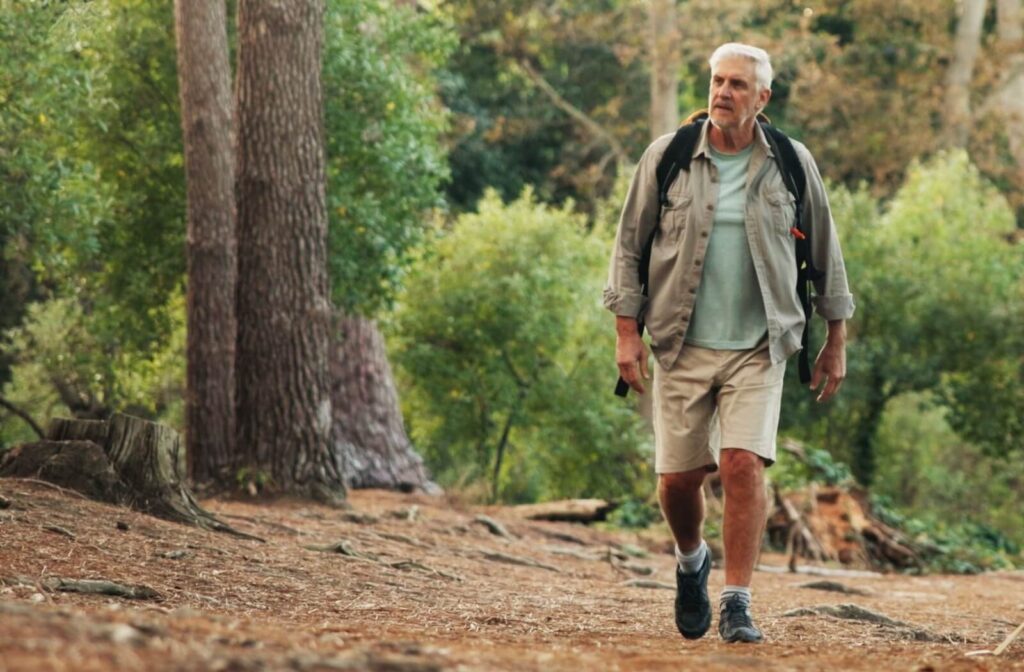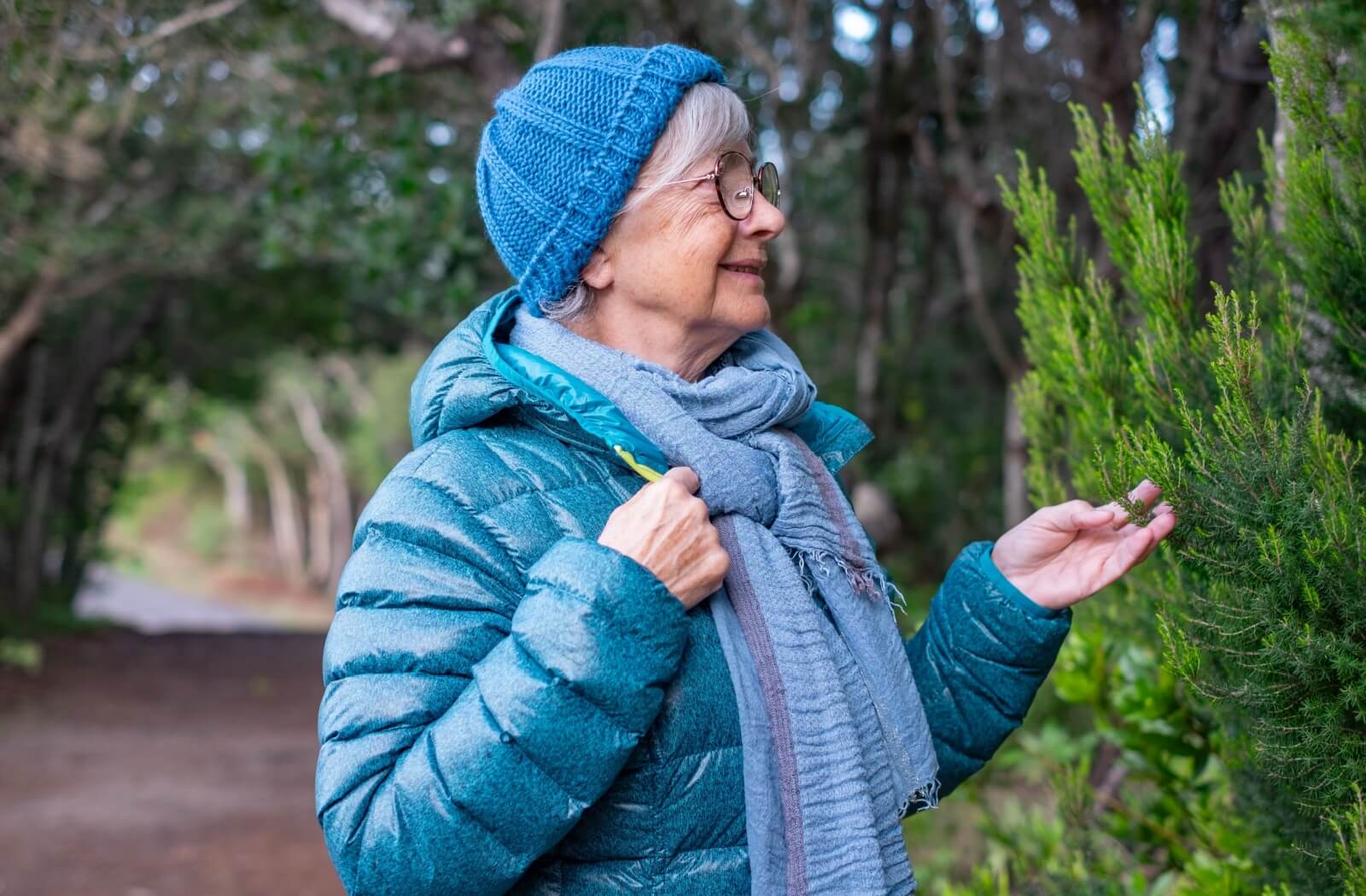For older adults, staying physically active is key to maintaining independence, vitality, and emotional wellness. But activity doesn’t need to be intense or complicated to make a difference. It’s all about building healthy habits.
One of the simplest—and most effective—ways to improve overall health is walking.
Walking is gentle on the body, requires no equipment, and offers a wide range of physical, mental, and emotional benefits. Best of all, it’s something most seniors can enjoy at their own pace, whether alone, with friends, or as part of a community group.
Why Walking Is a Top Choice for Seniors
Unlike more strenuous forms of exercise, walking is accessible, adaptable, and easy to incorporate into a daily routine. It allows older adults to stay mobile without putting stress on joints or needing special equipment.
In our community, walking paths and group strolls provide a safe and social way for residents to stay active. A community environment can help make movement a meaningful and enjoyable part of everyday life.
Physical Benefits of Walking
Walking is wonderfully accessible because it costs absolutely nothing, save for a supportive pair of walking shoes. It’s an ideal activity for seniors looking to stay active.
Helps Regulate Blood Sugar
As we age, the body’s ability to process glucose efficiently may decline, increasing the risk of Type 2 diabetes. Walking, especially after meals, encourages the muscles to absorb sugar from the bloodstream, naturally regulating blood sugar levels.
Regular walks—even short ones—can help improve glucose control over time and support overall metabolic health.
Supports a Healthy Heart
Heart disease remains one of the most common health concerns among older adults. The good news? Walking is an excellent way to promote cardiovascular health.
Research shows that just 30 minutes of daily walking can lower blood pressure, improve circulation, and reduce the risk of stroke and heart disease. It strengthens the heart without overexerting the body, making it ideal for seniors of varying fitness levels.
Improves Joint Function & Mobility
Joint stiffness, inflammation, swelling, and pain can discourage movement, but remaining still often exacerbates these symptoms. Walking encourages blood flow to the joints, which helps reduce inflammation and ease discomfort.
It also strengthens the muscles that support joints, such as the knees and hips, making it easier for seniors to maintain mobility, balance, and overall freedom of movement.
Mental & Emotional Benefits of Walking
Walking is also an opportunity to practice mindfulness, spend quality time with a loved one, or unwind and destress.
Boosts Mood & Reduces Stress
A walk outside is not just good for the body—it’s good for the mind. Studies have shown that walking, especially in nature, can reduce symptoms of anxiety and depression, boost mood, and increase feelings of calm and contentment.
Seniors often find walking to be a peaceful way to reflect, breathe deeply, and enjoy a sense of routine and purpose.
Encourages Social Connection
Isolation and loneliness are real challenges for many older adults, but walking can offer meaningful opportunities for connection. Whether it’s a neighborly stroll, a walking group, or a shared daily loop around the community, walking brings people together.
Group walks within a senior living community promote conversation, laughter, and mutual encouragement—all of which contribute to emotional well-being.
It’s Free, Easy, & Flexible
One of the best things about walking is that it’s always available. No gym membership, machines, or special gear is required. Seniors can walk indoors during inclement weather, enjoy shaded paths in warmer months, or simply take laps around their living space.
It’s also flexible: walks can be as short or as long as desired and easily adjusted to suit each person’s energy level, health status, or daily schedule.

How Much Should Seniors Walk?
The Centers for Disease Control and Prevention (CDC) recommends that adults aged 65 and older aim for at least 150 minutes of moderate-intensity activity per week—ideally spread across several days. That’s just 30 minutes a day, 5 days a week.
But it’s okay to start small. Many seniors begin with shorter walks—10 to 15 minutes at a time—and gradually increase their duration as stamina improves. The key is consistency. Even small steps make a big difference over time.
Safety First: Talk to Your Doctor
Before starting a new walking routine, seniors should check in with their healthcare provider. A doctor can recommend a safe starting point based on any existing health conditions and suggest modifications for comfort or mobility concerns.
Some seniors may benefit from using supportive walking shoes, walking poles, or indoor walking tracks when outdoor conditions aren’t ideal. Personalized guidance helps walking remain safe and enjoyable.
Signs You’re Overdoing It
Walking is a low-impact activity, but overexertion is still possible, especially when pushing too hard too quickly. Seniors should be aware of the following warning signs:
- Unusual fatigue or lingering soreness
- Dizziness, chest pain, or shortness of breath
- Pain or persistent swelling in the knees, hips, or feet
- Blisters or skin irritation that doesn’t heal
If any of these occur, it’s important to stop and rest. Consult a medical provider if symptoms persist.
Walking as a Way of Life
Making walking part of a regular routine can enhance life in meaningful ways. It provides structure, encourages time outdoors, and can quickly become a source of pride and enjoyment. Whether done solo or with others, walking helps seniors stay engaged with their bodies, their communities, and the world around them.
In supportive environments, walking also fosters a sense of agency. It enables seniors to explore independently, set goals, and take control of their wellness journey.
A Community Rooted in Active Living
At All American Assisted Living at Wrentham, walking is more than just exercise—it’s a way of staying connected, inspired, and well. Residents enjoy safe, well-maintained walking paths, garden strolls, and group outings that encourage conversation and daily physical activity.
Our team encourages residents to join walking clubs, enjoy the fresh air, and embrace the physical and emotional rewards of staying active.
If you’re exploring senior living options for yourself or a loved one, we invite you to schedule a tour. Come experience how our outdoor amenities, supportive community, and wellness-focused lifestyle can help you take confident steps toward a healthier lifestyle—one walk at a time.





